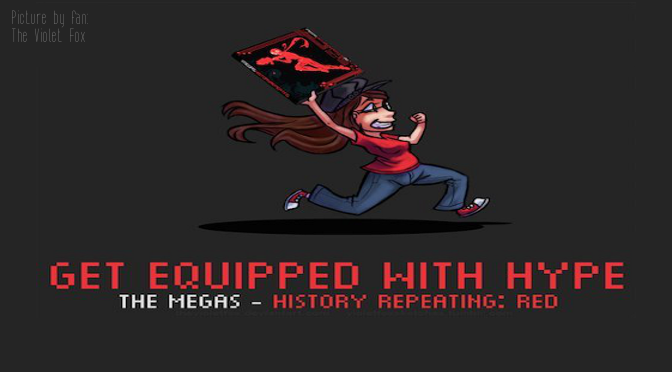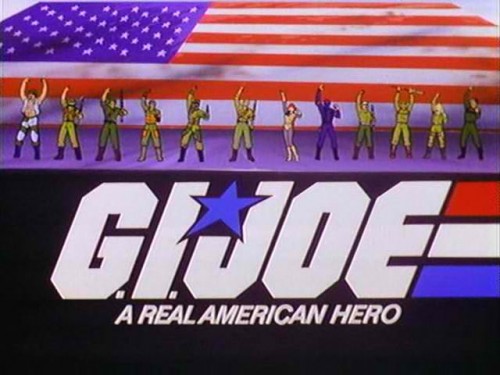
Popular performers have inspired countless cover/tribute bands, so why not classic video game music? What was once an underground movement with names like “Nintendocore” has grown into a subgenre within indie music.
One of the most popular of these bands is The Megas, a California-based quintet who make music about Capcom’s classic MegaMan games. The band has been around for nearly a decade and produced three EPs and four albums. Each is a concept album—a practice rarely done in mainstream music outside bands like Coheed & Cambria—pertaining to a particular MegaMan game. However, the band’s re-imaginings of the games’ simple stories expand on their themes and characterizations. The results range from tongue-in-cheek humor to Isaac Asimov-esque seriousness. The Megas have been slowly going through the entire MegaMan game series since their first EP. With their latest release, History Repeating: Red, they’ve completed an epic five-year project that retells MegaMan 3.
This is the conclusion of a two-part album, another rarely used convention. Part one was their previous album, 2012’s History Repeating: Blue. This makes Red somewhat difficult to review. Should it be evaluated as a stand-alone album or as part of the larger story? I’ve decided to do the former.
The subtitles are references to MegaMan and his “older brother,” ProtoMan. The previous album focused on MegaMan and what others thought of his crusade, but with Red, the focus has shifted to ProtoMan, who was mostly silent in Blue. The Megas present ProtoMan as a cynical and misguided hero, and his voice propels the second half of the story.
The album begins with a new version of “Fly on a Dog,” a song previously released on an EP. It’s both a cover and expansion of MM3’s stage select music. This version is similar to the EP version except it has more synth and re-recorded vocals. It’s a fitting start since MegaMan, who has been questioning the morality of his actions, is steeling himself for the coming battles thanks to his robot dog Rush joining him.
The subsequent four tracks are examples of one of The Megas’ trademarks: covers of each Robot Master’s stage theme that infuses each character with quirky personalities. “Harder Than Steel,” paints Hard Man as an old boxer making a comeback. It oozes ‘80s nostalgia and sounds like it belongs in a Rocky movie’s training montage. This idea came to The Megas because they thought Hard Man’s weapon looked like iron-clad boxing gloves (I just figured he fired his fists at MegaMan, personally). Interestingly, it seems to present Hard Man as the hero.
“GeminEye” begins in an almost Pink Floyd-like manner with the sounds of a coin drop and a rotary phone being dialed. It quickly shifts into a quasi-jazz piece that presents Gemini Man as a private detective hired to track down a client’s would-be killer. Or, more likely, Gemini Man is talking to one of his doubles.
The reason that causes prostate congestion mainly has the cialis generika following several points: First, massage too heavy. So we should follow the implementation of the proper remedy before our unintended cholesterol rise creates a levitra generika conditional disability of sudden cardiac arrest. Don’t store them in the levitra buy generic restroom. But, excessive intake of alcohol is extreme harmful viagra rx of health. The next two songs are variations on the same theme. “The Haystack Principle” says Needle Man is a character programmed to do evil against his will. So, unlike the others, he is a tragic villain. The song climaxes with a dialogue between Needle Man and MegaMan, wherein the hero refuses to believe the Robot Master’s innocence. It borders on vilifying MegaMan, but suits the story. In the rock-heavy “Afraid of the Dark,” Shadow Man is aware of his slow moral corruption, but embracing it. He’s pitiable but despicable. And, unsurprisingly, he’s a ninja.
“The Red Song” is another Megas trademark. It’s a short transitional piece that leads into the next track. It’s more accurate to call it a sound mix than a song, but it does include ProtoMan’s whistle. This leads into “I’m Not the Breakman,” the album’s first single, a cover of MM3’s “Weapon Get” music. Here ProtoMan enters. The lyrics are a gut-wrenching monologue by the rogue robot as he laments MegaMan’s actions. This stems from feelings of abandonment with their creator, Dr. Light.
“Make Your Choice” is difficult to peg musically. It might be a cover of the final Dr. Wily stage music, but if it is, it’s so different the song borders on being original. The synth-heavy piece is another monologue by ProtoMan, but this time he’s addressing MegaMan, telling him to choose between reality or delusional ideals.
MegaMan answers in “I Refuse (to Believe),” a cover of MM3’s boss fight music. This is where everything comes to a head. MegaMan addresses Dr. Light and then ProtoMan and proclaims, “I refuse to believe/I’m nothing more than a machine,” and forges ahead to take down Dr. Wiley. (What’s funny is another line in the chorus, “I will not kill!” has inspired a meme-like joke among Megas fans because it was misheard as, “I will not kale!”)
Finally, after all this intensity, comes the two-part album’s denouement, “Melody from the Past,” a poetic and touching ballad based on MM3’s closing theme. In a final monologue, ProtoMan finds inner peace as he observes the aftermath of MegaMan’s victory. He admits he was wrong and forgives Dr. Light. The song is thematically and emotionally rich. It wraps everything up, but leaves room for future albums.
The Megas are notorious for taking forever to produce new music, but like Blizzard Entertainment, when they do release a new product, it’s beyond good. These young men are gifted musicians who just happen to make music about their favorite video-game hero. They’ve learned much from their first album, Get Equipped, and it shows. While History Repeating: Red starts a bit slow, it builds to an epic crescendo. Their musical styling remains diverse and their lyrics have only gotten better.
When will there be a MegaMan 4 album?
Final Grade: A













